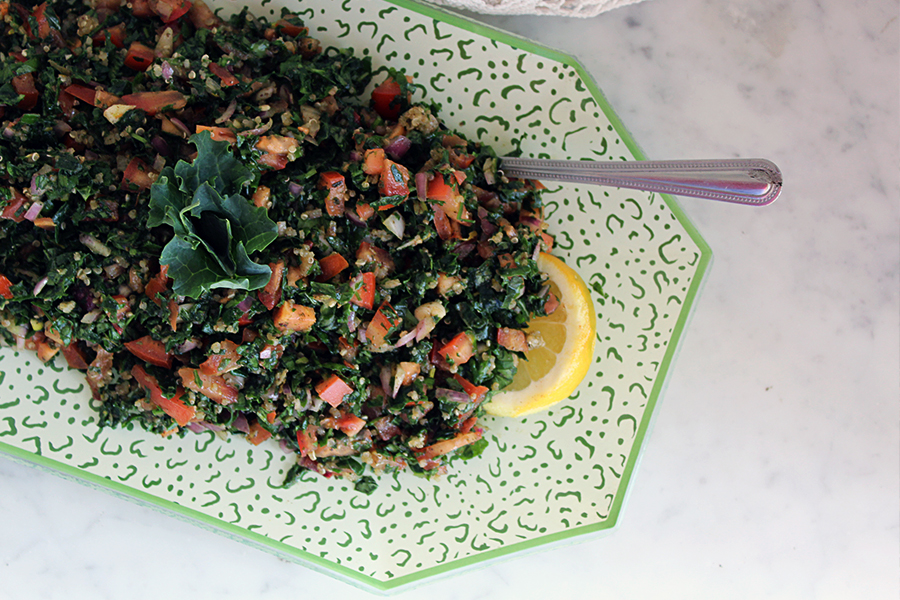When we say “Mediterranean food “, you mind probably goes to pizza and pasta from Italy but these dishes don’t exactly fit into any healthy dietary plans called “Mediterranean” . A true Mediterranean traditional diet consists mainly of fruits, vegetables, seafood, olive oil; hearty grains and other whole organic foods that help fight against many heart diseases and other diseases.
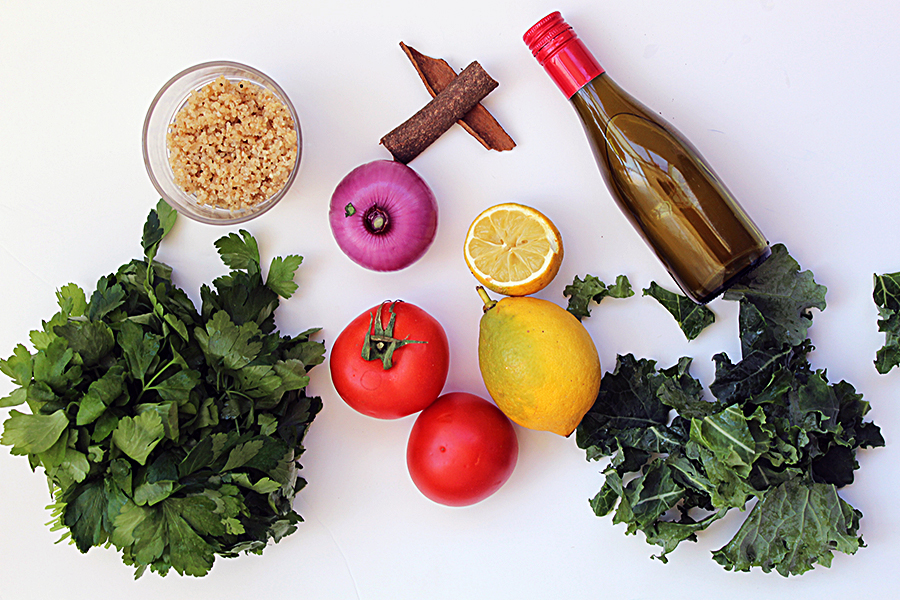
Basically the true Mediterranean traditional diet, the one that is not affected by foreign additive is a diet consisting mainly of fresh and homegrown foods instead of processed goods, aside from diet the Mediterranean lifestyle is full of daily exercise, sharing meals with others and fostering a deep appreciation for the pleasures of eating healthy and delicious foods.

More particular, Lebanese cuisine is one of the Mediterranean cuisines. It includes abundance of whole grains, fruits, vegetables, starches, fresh fish and seafood.
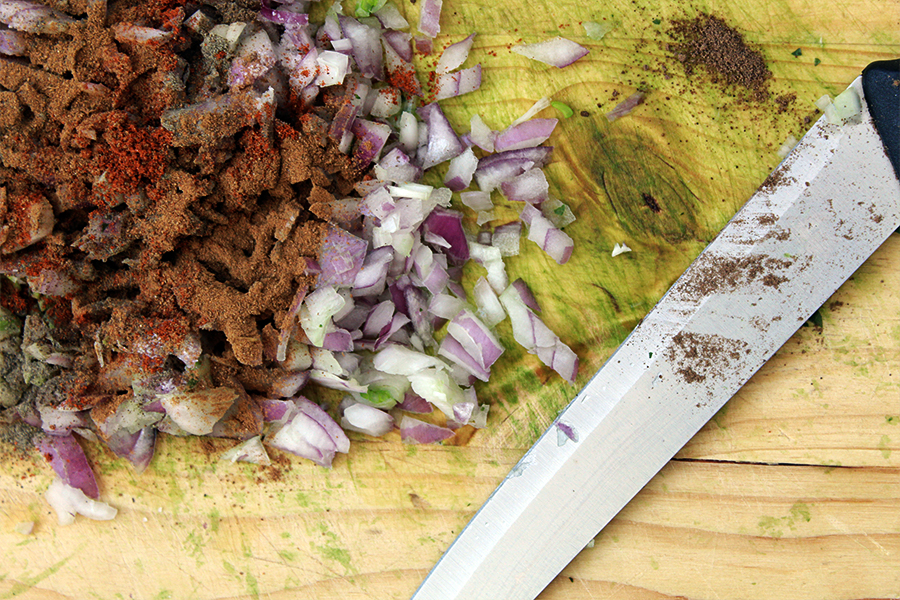
The noticeable in our Mediterranean Lebanese cuisine is that animal fats are consumed sparingly. Poultry is eaten more often than red meat. And when eaten it is usually lamb on the coast and goat meat in the mountains region.
It is a cuisine full of garlic, lemon and olive oil and herb seasonings.
Most of our food are grilled, baked or sautéed in olive oil. Butter and cream are rarely used. Vegetables are a big part of our feasts from raw, pickled to cooked. A big amount of herbs and spices are present in our dishes. And fresh fruits are always present at the end of every feast or meal.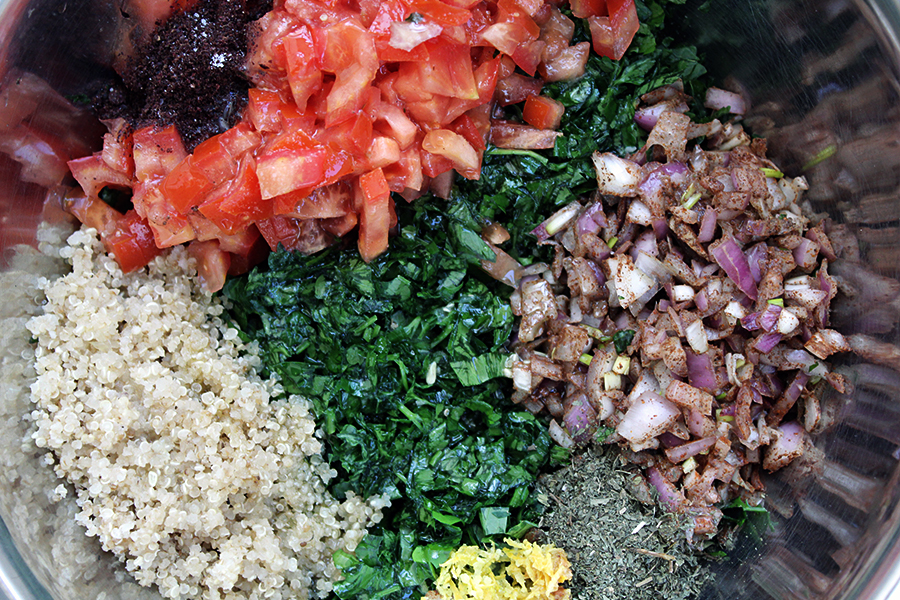
And one of our must important dishes that are really hard to see a Lebanese table without that dish on it is our one and only famous “Tabouleh”.
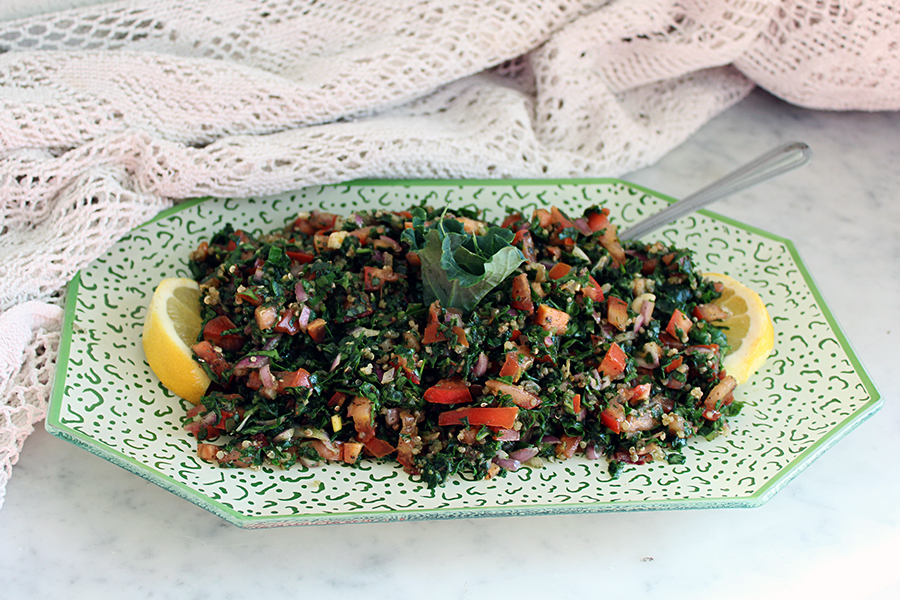
Tabouleh is the most important part of our traditional Lebanese “mezza”. And for me honestly it is my favorite salad. It is refreshingly delicious and very healthy. I will eat Tabouleh in all her shades and tastes.
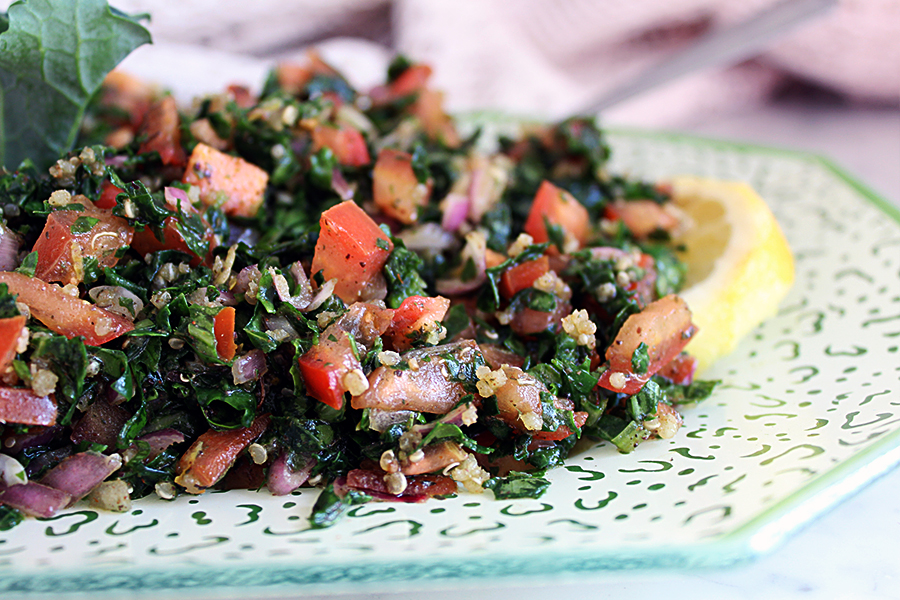
As I mentioned before the Lebanese traditional cuisine is known worldwide for its healthiness and exoticness . Similar to many people and food lover abroad who are trying to imitate our cuisine, there are Lebanese cooks also who are trying to add some kind of western and American style to our food! By doing so, our food is losing its freshness and homegrown originality and somehow its identity slowly with time. Processed foods are taking the place of fresh and seasonable ingredients.

I am not against opening up to different cuisines and utilizing and adapting what they have to offer but we have a great traditional diet that people are actually trying to imitate and use. So if we want to add something from a different culture, at least add something that would benefit our health and not screw up everything you have worked for!
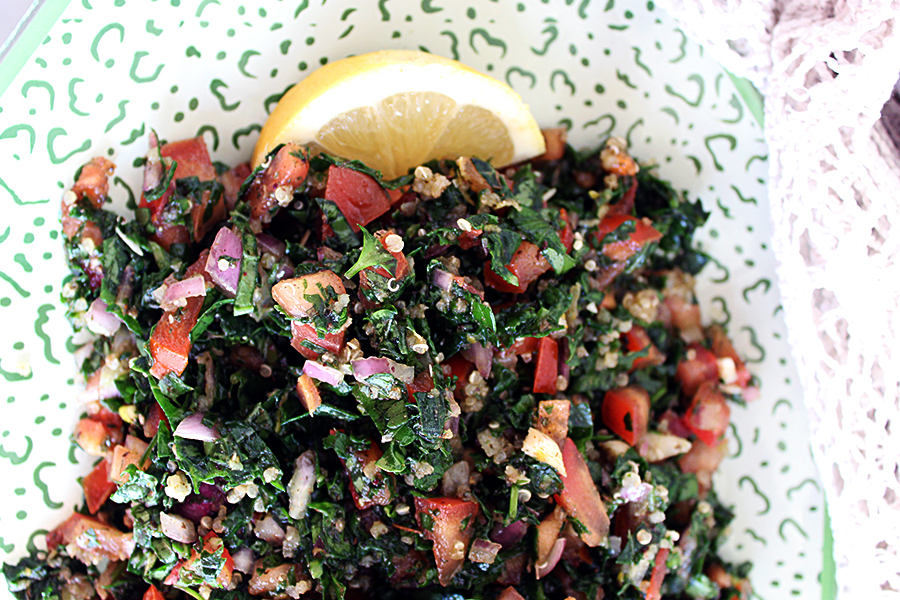
Now about adding foreign ingredients to our dishes, always start with vegetables fruits and super foods from seeds and grains, it can never go wrong with those! Adding fresh organic food from wherever country origin is always a good idea! But adding packed processed food stuffed with Trans-fat, saturated fat and chemical ingredients that you can’t even spell is never a good idea wherever country are made in!
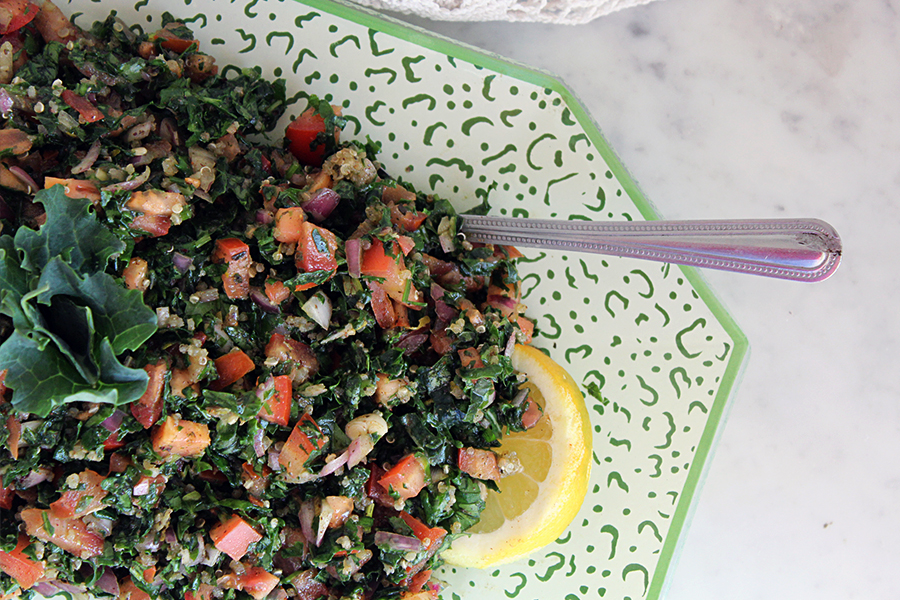
My recipe for today is an example of how you can use super food and exotic vegetables in your favorite traditional dish without losing it authentic delicious taste.
Actually I tried this concept with previous traditional recipes like “pumpkin kebbe”, “stuffed zucchini” and “fig jam”.

Anyway back on today recipe, one of our must important dishes that are really hard to see a Lebanese table without that dish on it is our one and only famous “Tabouleh”.
Tabouleh is the most important part of our traditional Lebanese “mezza”. And for me honestly it is my favorite salad. It is refreshingly delicious and very healthy. I will eat Tabouleh in all her shades and tastes.
The original Tabouleh is traditionally made of tomatoes, finely chopped parsley, fresh mint, bulghur and onion, and seasoned with olive oil, lemon juice and salt.
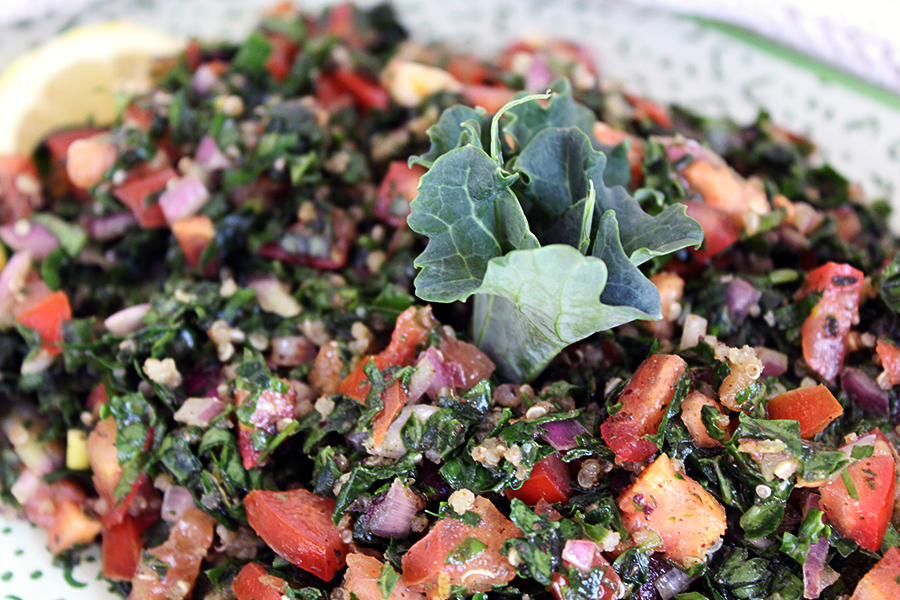
My experience today, was replacing parsley with kale and Burgul with quinoa.
A combination between (quinoa) a grain originated in the Andean region of Peru, Bolivia, Ecuador, Colombia and Chile, with a European based leafy green (kale) with my famous local traditional salad turned out to be the most delightful fusion ever! That everyone should try.
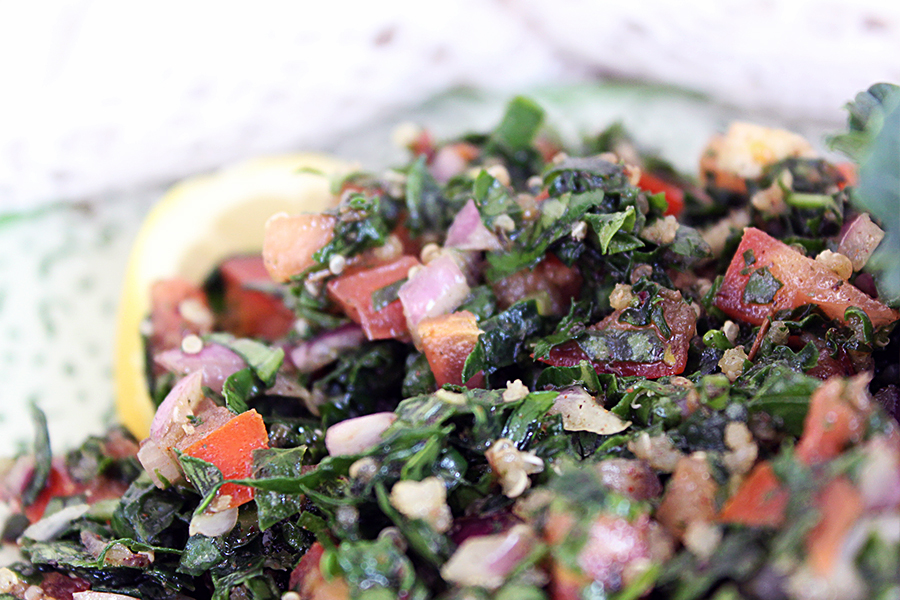
If you give this recipe a try, let me know! Take a picture and tag it
#annacookingconcept on Instagram!
I’d love to see what you come with. Happy week everyone!
KALE Tabouleh
Yield 5-6 servings
Ingredients:
- ½ cup cooked quinoa
- 4 cups finely chopped kale
- 1 cup finely chopped parsley
- 2 cup chopped tomato
- 1 large onion, finely chopped
- ½ Tbsp. very finely minced fresh mint
- 1 tsp. lemon zest
For the dressing:
- ¼ cup lemon juice
- 2 Tbsp. virgin olive oil
- ½ tsp. salt
- ¼ tsp. black pepper
- ¼ tsp. sweet pepper
- ½ cinnamon
- ½ paprika
- 1 tsp. “sumac”
Instructions:
- Mix the lemon juice and olive oil for the dressing and set aside
- After you chopped the onion, sprinkle all the dressing peppers on it and scrub it all together.
- In a large bowl, pour all the chopped vegetables with the quinoa and lemon zest, add onion mixture .
- Add the lemon and olive oil dressing and mix it all together.
- Add salt for your taste
- Refrigerate for an hour before serving.
- Enjoy!
Nutritional Information:
Serving size: 01, Calories: 105, fat: 6 g, carbs: 13 g, fiber: 2 g, protein: 3 g

